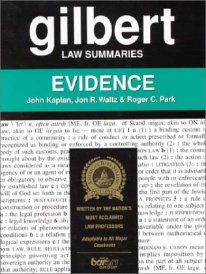I started creating outlines almost 22 years ago.
I’d just started law school and, having eked by in college, came to the realization that I’d need to actually study in order to do well this time around. In pouring over all of my “How to Succeed in Law School” books, I learned that outlines were the primary method of studying for law school exams. So, I did what the majority of law students did – I scooped up several Gilbert’s outlines sold at the bookstore and added them to my pile of legal textbooks to read. (Unfortunately, my law school days were before the internet was in full force. Today, law school outlines are out there in abundance – like Rosé on store shelves in May).

These outlines were a godsend. They put into plain, easy to understand language what my textbooks were saying in gobbledygook. I was able to make so much more sense of legal cases and theories because the outlines presented material in an orderly and logical way.
When it came time for me to study for the exams, I decided to create my own outlines – pulling from a variety of sources (legal textbooks, my class notes, the Gilbert’s outlines) and condensing the material. The end result was a product that I had tailor made to study for how best suited my brain. I did this for every single one of my law school classes, and it worked.*
Fast forward almost 20 years, I was taking a French Wine Scholar class through the Wine Scholar Guild (and taught by the fabulous Reggie!) There was a vast amount of materials and numerous, minute details that I needed to keep track of in order to pass the exam. I knew exactly how I was going to do this . . . I went back to my law school days and sat down to put all this information into an outline.
I started with Alsace – determining what major topics I needed to know about this region:
I. History, Location, Climate, Topography, Grapes, Wine Styles, etc. – these became my main categories.
A. Below these, I added more specific subcategories – Soils (Topography), Noble Varietals (Grapes), Selections de Grains Nobles (Wine Styles), etc.
1. And below these subcategories, even more detail . .
The end product was an organized summary of the Alsace region. I continued doing this for each region we covered so at the end of class, I had a 60+ page outline of the material. And again, this method of studying – for me – worked.**
Will outlines work for everyone? Unfortunately, no. Everyone learns and retains information differently. Some people swear by flashcards. Others trace maps of wine regions. Many do a combination of several study methods. Figure out what works best for your own learning style (but if these outlines help – awesome!) 🙂
Right now, I’m creating these outlines for my own study use and (hopefully!) future use in teaching. I’m starting this site because I want to contribute to the collaborative nature of the wine industry – people helping other people succeed. That’s one of the many, many things I love about working with wine people as opposed to lawyers! 😉
So check out the outlines, and Happy Corkdorking!
* I graduated magna cum laude, #7 in my class of almost 200 students.
** I passed my FWS exam with Highest Honors – a 97/100.